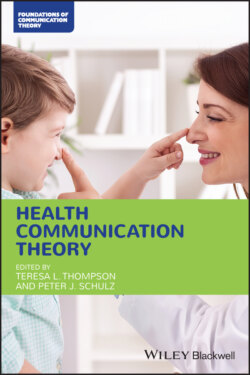Читать книгу Health Communication Theory - Группа авторов - Страница 39
Illness as a Call for Stories
ОглавлениеIn foundational work based on his own and others’ experiences, sociologist Arthur Frank (1995) positioned illness as a call for stories. His popular typology presents three common plotlines that “wounded storytellers” use to first understand and then to explain their illnesses. The most familiar and socially condoned is the restitution plot, which posits that health problems can be remedied and the body restored to its pre‐illness state. In contrast, the chaos plotline stories illness as incoherent and disordered, with no hope for control and no promise of getting better. Frank (1995) argued wounded storytellers learn to tell the quest narrative – the third plotline, in which illness is deemed a source of insight to be shared with others – when they “meet suffering head on. They accept illness and seek to use it” (p. 115). Scholars have employed this typology as a theoretical framework in research especially focused on life with chronic illness, impairment, or loss (e.g. Titus and de Souza 2011); however, it may not be applicable for all illness situations, including ailments that are chronic but managed, and successful recoveries/remissions that provoke new emotional, cognitive, and physical challenges, like long‐term cancer survivors’ late effects from treatment (e.g. Ellingson 2017).
Illness narratives are generated in response to a rupture or turning point in a person’s life (Bruner 1990) and are told in and through the body (Frank 1995), meaning “the body is simultaneously cause, topic, and instrument of whatever story is told” (Sparkes and Smith 2008, p. 302). Inherently, narratives of health and illness are embodied and dialogic, calling upon listeners (or readers, viewers, touchers) to join with tellers (or writers, filmmakers, artists) in the creation and re‐creation of meaning (Harter et al. 2020). Narrative theorists (Frank, 1995; Kleinman, 1988) underscore the importance of reciprocity for bearing witness to individual or community suffering and trauma. Storytellers have the moral responsibility to guide others who may follow, just as storylisteners have the moral – and often uncomfortable – obligation to listen and respond to that suffering.
Core dimensions of narrative theorizing from health communication scholars encompass the functions (e.g. identity construction and community building), grammars (e.g. emplotment and temporality), and types (e.g. institutional and societal stories) of narrative activity (Harter et al. 2005). Narratives endow experience with meaning by organizing events across space and time, identifying characters and their relationships, and determining causes and effects (Harter 2013). Personal narratives provide a way of sensemaking in uncertain or chaotic circumstances and enable a sense of control in the face of threat or disorder. They help transform personal identities regarding how individuals view themselves and are perceived by others, and they help create identification among people experiencing similar problems, thereby building a sense of community in place of social isolation (Sharf and Vanderford 2003; Sharf et al. 2011). Finally, narratives increase public awareness, challenge master narratives (i.e. stories that underlie, reflect, and perpetuate predominant cultural values), and propel health advocacy and social activism (Sharf 2001; Zoller 2005). Sharf et al. (2011) envision the latter contributing to new directions in health communication scholarship, namely “a parallel continuum of stories of illness to stories of prevention, healing, and mobilizing resources” (p. 42).
